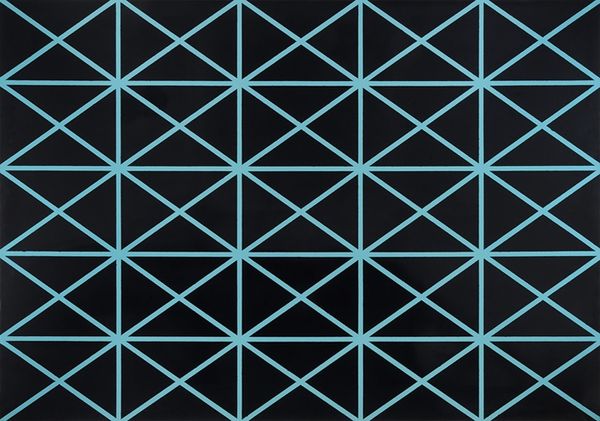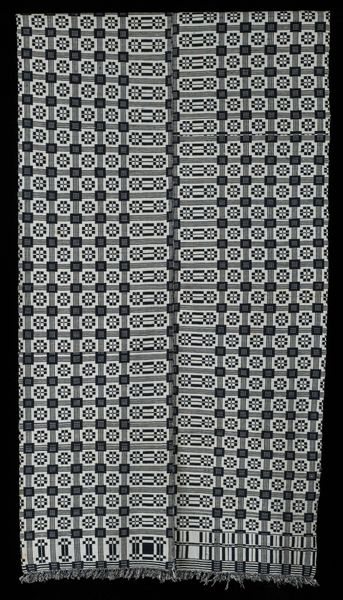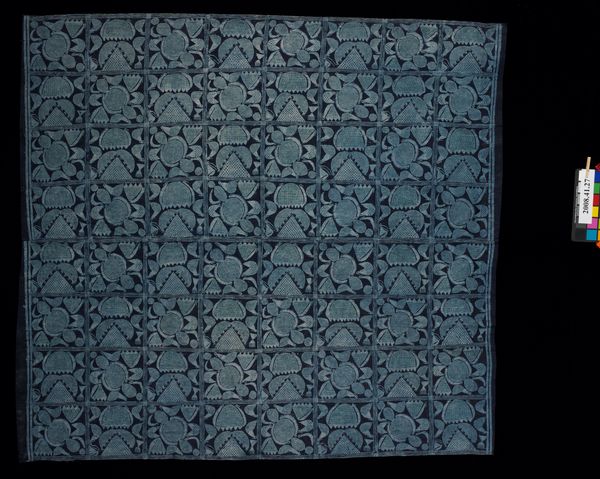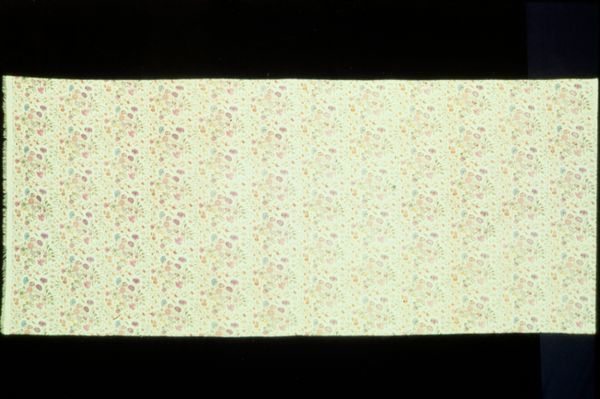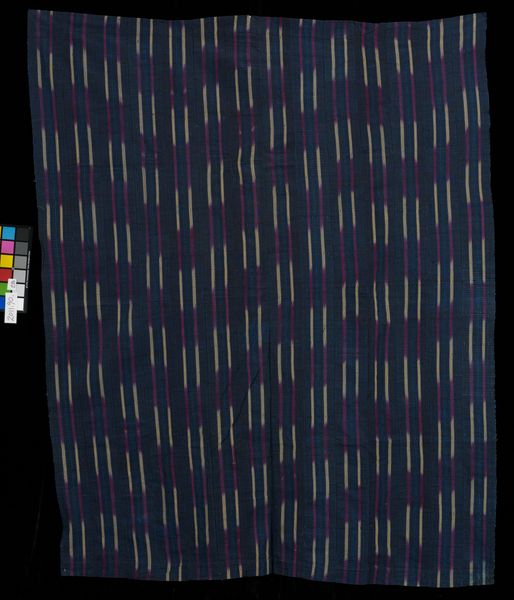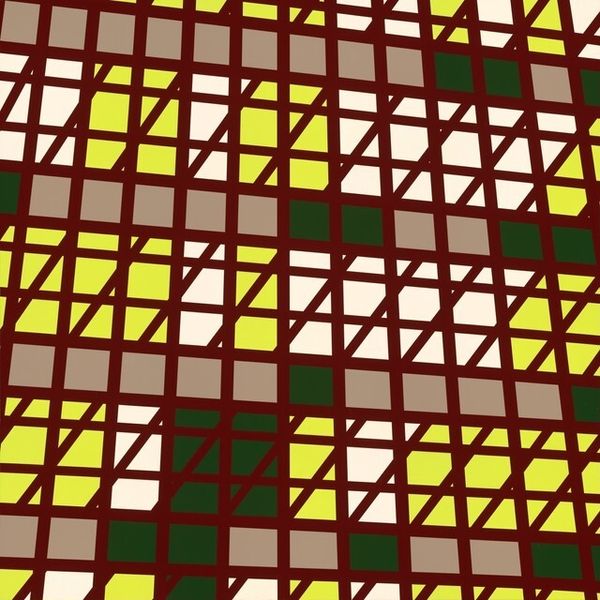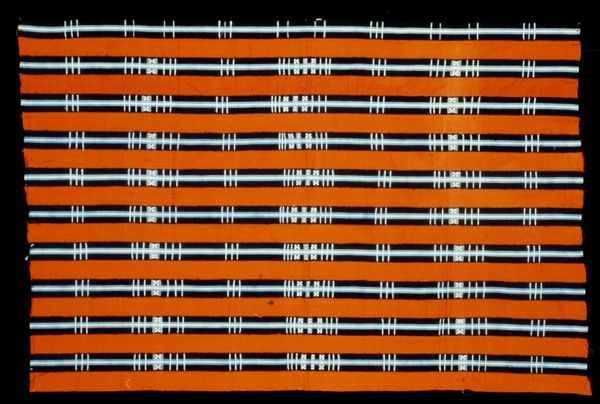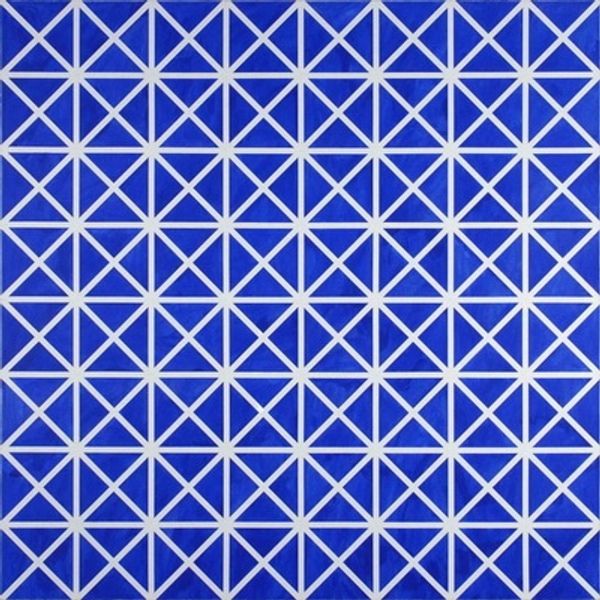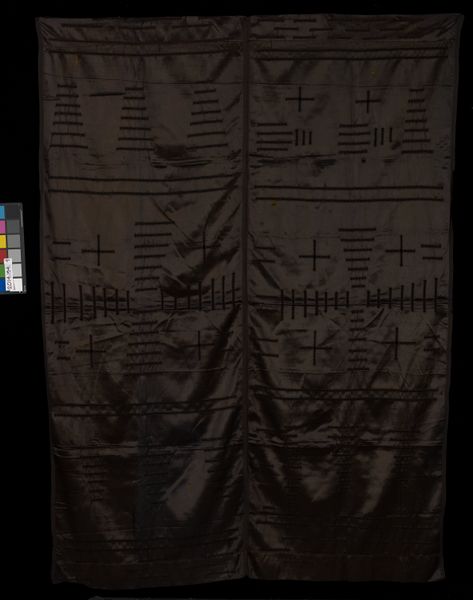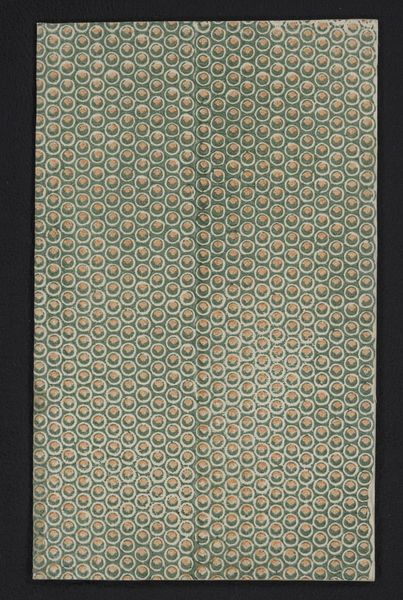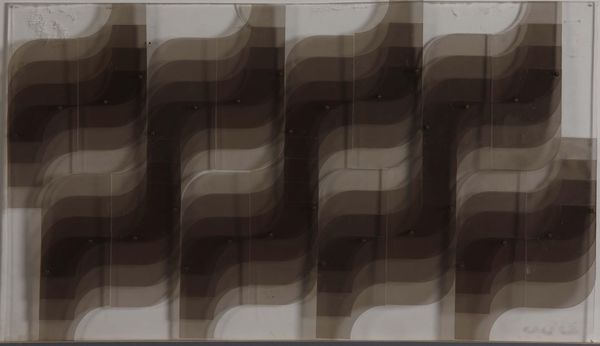
textile
#
african-art
#
pattern
#
textile
#
geometric
#
yoruba-art
Dimensions: 76 5/8 x 68 5/8 in. (194.63 x 174.31 cm)
Copyright: Public Domain
Curator: Take a moment to appreciate this Adire cloth, a textile of Yoruba origin housed right here at the Minneapolis Institute of Art. Its exact date of creation is unknown, adding a bit of mystery. Editor: My first impression? The stark contrast and repetitive pattern create a really captivating visual rhythm. It's so simple, just geometric shapes, yet so striking. It almost feels modern. Curator: It’s fascinating to consider the cultural context. Adire textiles like this one have historically served not only as clothing, but as a form of visual communication, reflecting social status and communal identity. The standardization of forms is due to the influence of industry in textile design over time. Editor: Absolutely. These repeating starburst patterns, contained within those neat squares, do they carry specific meanings beyond aesthetics? To me, they evoke themes of radiance and expansion, and a subtle political commentary through Yoruba identity, offering glimpses into their belief systems. Curator: Historically, different workshops produced distinctive patterns, becoming a recognizable brand and creating local artistic economies. Some patterns became so popular in the community they started representing concepts of community itself. These types of textiles acted as important commodities for internal trade markets, especially in cities like Ibadan and Abeokuta. Editor: It is all so deeply connected to the historical narrative. Even the indigo dye itself surely holds symbolic value. And the technique used, resisting parts of the cloth from the dye, shows an intricate production. The Yoruba culture really saw symbolism everywhere! Curator: It is a strong claim. But I agree in the sense that the cloth is clearly rooted in an historical and societal framework of exchange that shaped Yoruba culture at the time. Editor: Studying these historical details adds such depth to the experience. Seeing beyond the basic image really shows how material can echo its place. Curator: Exactly! We can move through both personal interpretation and understanding societal forces that determined artistic development. It allows for richer exploration. Editor: Agreed. This small artifact really is a beautiful embodiment of both aesthetic power and the power of art objects within cultural and market landscapes.
Comments
No comments
Be the first to comment and join the conversation on the ultimate creative platform.

